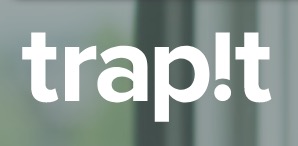
Engineers as Employee Advocates? Yes, It Can Be Done
Employee advocacy is a no-brainer for certain departments. Marketers want to boost the company’s share of voice. Employee advocacy can help. Sales professionals want to engage customers. Social can help with that, too. HR teams want to build a strong employer brand and attract new hires. Employee advocacy can check those boxes.
For customer-facing departments, the business case practically writes itself. But what about your company’s engineers? Many of them would be great advocates for your company. But how in the world do you get them to participate in your employee advocacy program?
Believe it or not, it’s not as hard as it might seem. It’s all about how you frame things. Below are three quick tips that will help you turn your engineers into advocates.
1. Spend Time with the Engineering Team to Learn about Their Goals
“Just because” is never a good reason to use social. When working with engineers–or any employee for that matter–you must map social networks to established goals. Those goals might be related to leading people, connecting with other people in your organization, and interacting with influencers outside your organization.
It’s tempting to cram all engineers into a box by treating all engineers the same. But as Miguel Rodriguez, Senior Manager of Social Media at MarkLogic, has pointed out, companies have a variety of engineers, who have different roles and different goals. Sales engineers are different from, say, front-end developers, which are different from back-end developers. And each group of engineers will have different goals.
Take sales engineers as an example. Since they work closely with customers, they will want to know what your buyers are saying, and they will want to understand how they can use social to build relationships with their customers. Your back-end developers may not share those same goals.
So, take the time to speak with the various engineering teams. Learn about their goals. Then, map their goals to specific social activities. You might want to create something like this:
2. Start with Listening
Regardless of an engineer’s role at the company, listening will be a fundamental component of their social activities. Listening can help engineers build relationships with other members of their team, engage with influencers, learn about the industry, unearth information about competitors’ product updates, and learn more about their fields of expertise.
There’s something for everyone.
To understand how engineers will listen on social, you will need to do some research. Your technical teams won’t necessarily follow the same people you follow, nor will they care about the same Twitter hashtags. While a social media manager might care about the #SocBiz hashtag and follow people like Jay Baer, a front-end developer might want to skim posts that use the #UX hashtag and follow people like Addy Osmani.
While Google is a good place to start your research, it can’t tell you everything. Try speaking with a few engineers who are socially savvy, and understand how they use LinkedIn, Twitter, and Facebook for professional purposes.
3. Tailor Your Training Based on Job Function and Social Savviness
Wouldn’t life be simpler if you could create a one-size-fits-all training program for your company? I hate to be the bearer of bad news, but that’s a pipe dream.
Training needs to be tailored to the individuals and their goals. Often times, it’s best to design training around job functions. Why? Because back-end engineers will have similar goals to other back-end engineers, and marketers will have similar goals to other marketers.
For instance, an engineer may not need to know look for buying signals or shape the buyer’s journey by sharing content. That’s something a salesperson will care about. So, does it make sense to train sales reps and engineers at the same time? Probably not.
Likewise, does it make sense to train complete novices alongside advanced social users? Probably not. And be careful not to fall into a mental trap. Being able to write code does not make someone an instant genius on all things related to technology, including social networks. Just as your HR teams will have varying levels of social expertise, so, too, will your engineering teams. That’s why it’s important to assess the social maturity of your employees before you launch your training program. You don’t want your power users to get bored and drop out, nor do you want eager novices to be overwhelmed.
Don’t Sell Your Employee Advocacy Program Short
While it makes sense to start your employee advocacy program with customer-facing groups of employees, your employee advocacy program does not have to stop there. There’s a lot of potential to expand your program to other job functions like your engineers. You just have to find ways to connect the dots between their business goals and social media.
For more tips on launching an employee advocacy program, here are a few resources that you might enjoy: